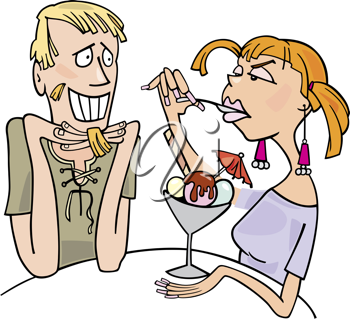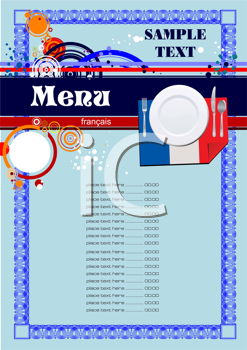Restaurants and menus
- At first get to know about the history of eating out.
- Read the texts, check the interesting facts from the web.page and find answers to the questions.
- You can get to know who is who in restaurant business and read about chefs' whites.
- You will go through different types of restaurant menus and can create your own one.
- Finally you can do the PRACTICE EXERCISES which include REAL MENUS and ADDITIONAL READING

While most people think of fast food in terms of modern chain restaurants, food historians like to remind us that the first "fast food" restaurants were thermopoliums, operated by Ancient Romans. For a very long time eating out was meant only for travellers, in inns and taverns where the customers were served with food, that more or less would have been on the domestic table anyway. Regular eating out, and eating out for status with special foods reserved for the occasion, is a predominantly French institution.
- Do you know when was the first café opened?
- Who introduced the first ice-cream to Europeans and when did it happen?
- When was coffee first brought to Europe? And when did it reach to Americans?
- When was the first café opened in Paris? What was the nationality of the owner?
- When was Moulin Rouge opened in Paris?
 Restaurant menus, as we know them today, are a relatively new phenomenon. Food historians tell
us they were a "byproduct" of the French Revolution. About
restaurants. In the 20th century children's menus take their place at the table.
Restaurant menus, as we know them today, are a relatively new phenomenon. Food historians tell
us they were a "byproduct" of the French Revolution. About
restaurants. In the 20th century children's menus take their place at the table.
From the early 1770s, the use in restaurants of a printed menu, or carte, that allowed each customer to choose his or her own restoratives marked another distinctive innovation in service. Before that, a menu had always been a list of all those foods to be served during a particular meal. Cookbooks recommended them and chefs in wealthy households composed them, but all the items on the menu were brought to the table in the course of the meal. A table had no menu; the eaters and the food arrived at the same moment.
The restaurant's new role as a place for the exhibition and treatment of individual weaknesses, however, necessitated a new sense of the menu: the creation of a list of available items from which each consumer made personal choices at the most convenient moment.
When ordering from a restaurant menu the patron therefore made a highly individualistic statement, differentiating the client (and his or her bodily complaint) from the other eaters and their conditions. Restaurants had printed menus because they offered their customers a choice of unseen dishes. The printed menu allowed restaurant patrons to calculate costs "before spending a penny." There in print, set and fixed before his or her very eyes, the restaurant customer saw prices and dish names, concoctions and costs. No longer required to share each of the dishes brought to a table d'hote, but permitted to concentrate on the ones he or she explicitly requested, the restaurant patrons could make preference as much a matter of finance as of taste.
HAVE A LOOK AT A DIGITAL COLLECTION OF OLD MENUS. CLICK HERE: COLLECTION OF MENUS